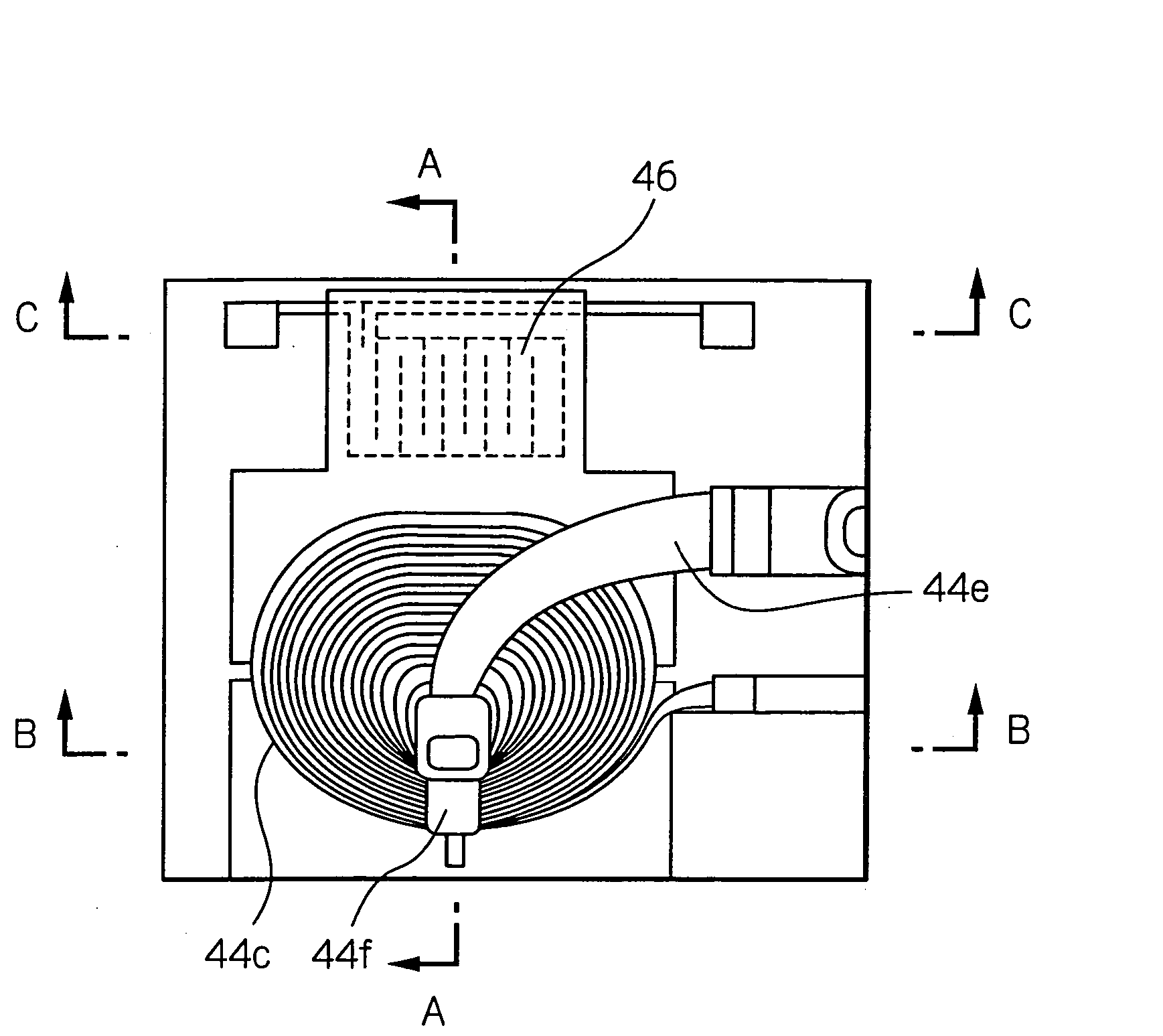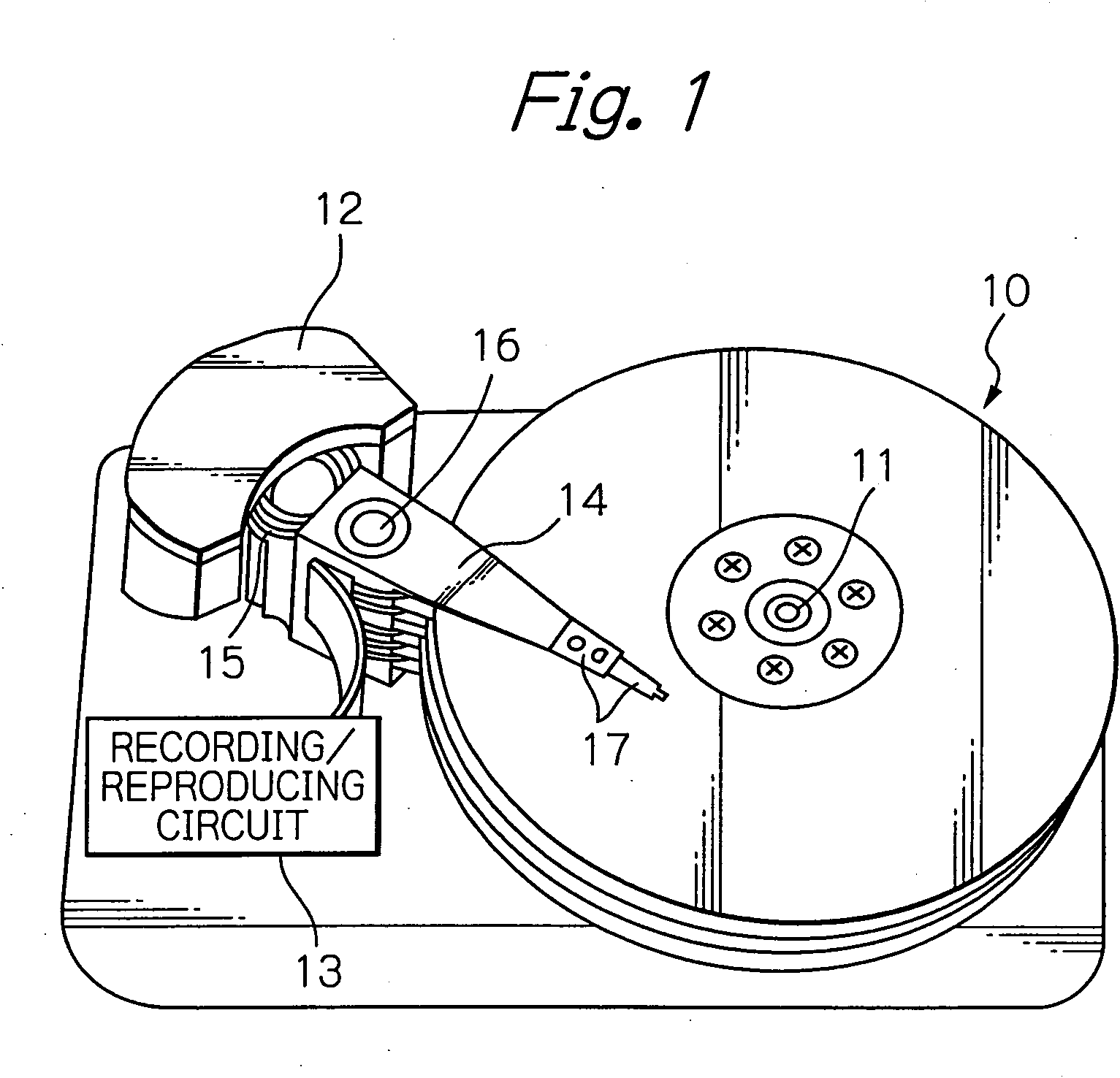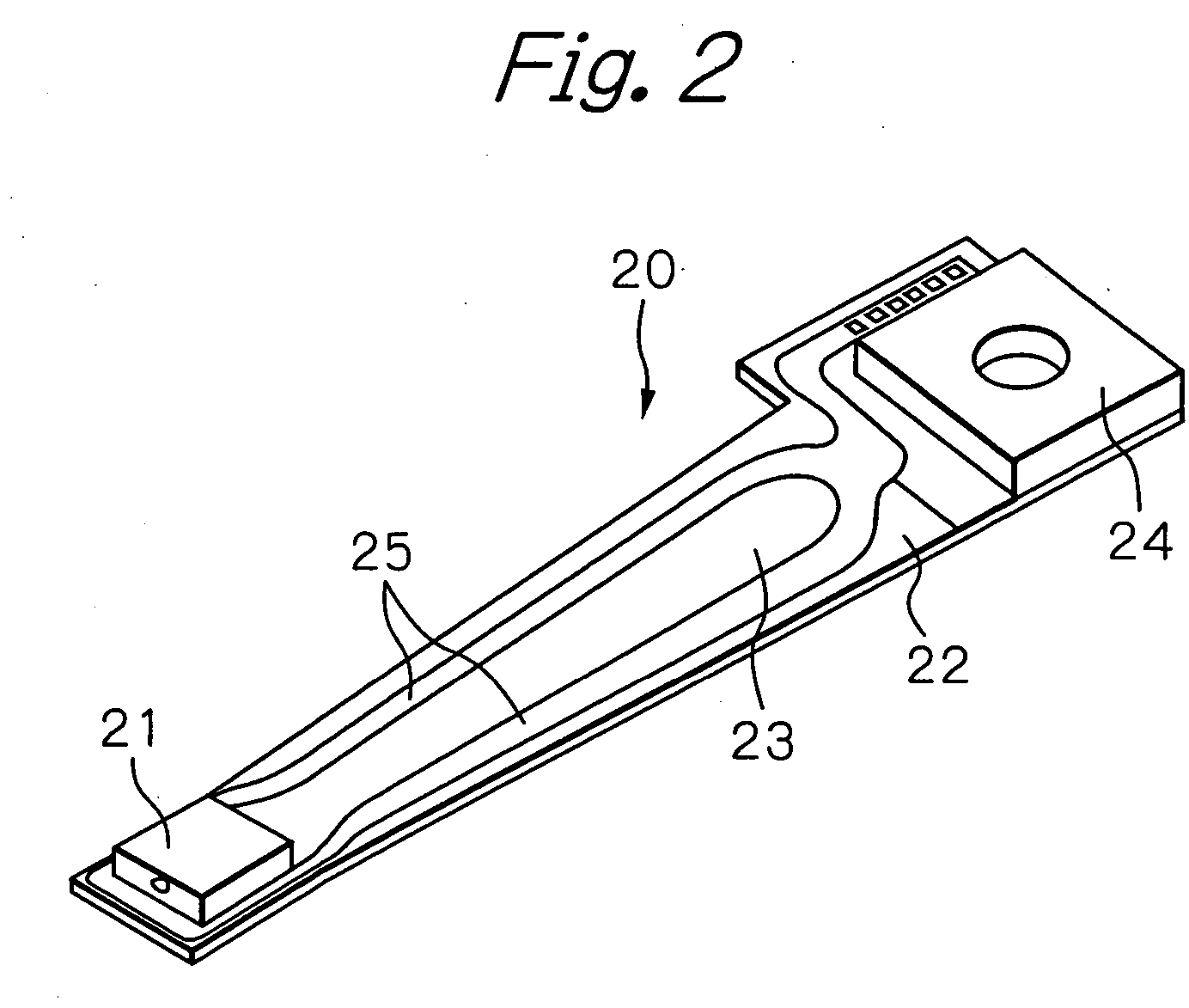Thin-film magnetic head with heater for adjusting magnetic spacing
- Summary
- Abstract
- Description
- Claims
- Application Information
AI Technical Summary
Benefits of technology
Problems solved by technology
Method used
Image
Examples
Embodiment Construction
[0044]FIG. 1 shows a perspective view schematically illustrating a structure of a main part of an embodiment of a magnetic disk drive apparatus according to the present invention, FIG. 2 shows a perspective view illustrating an embodiment of an HGA according to the present invention, and FIG. 3 shows a perspective view of an embodiment of a thin-film magnetic head (slider) provided on the end portion of the HGA.
[0045] In FIG. 1, reference numeral 10 indicates a plurality of magnetic disks rotating around a rotational axis of a spindle motor 11, 12 indicates an assembly carriage device for positioning a thin-film magnetic head (slider) on a track, and 13 indicates a recording / reproducing circuit for controlling read / write operations and heat operations of the thin-film magnetic head, respectively.
[0046] The assembly carriage device 12 is provided with a plurality of drive arms 14. These drive arms 14 are rotatable around a pivot bearing axis 16 by means of a voice coil motor (VCM) ...
PUM
 Login to View More
Login to View More Abstract
Description
Claims
Application Information
 Login to View More
Login to View More - R&D
- Intellectual Property
- Life Sciences
- Materials
- Tech Scout
- Unparalleled Data Quality
- Higher Quality Content
- 60% Fewer Hallucinations
Browse by: Latest US Patents, China's latest patents, Technical Efficacy Thesaurus, Application Domain, Technology Topic, Popular Technical Reports.
© 2025 PatSnap. All rights reserved.Legal|Privacy policy|Modern Slavery Act Transparency Statement|Sitemap|About US| Contact US: help@patsnap.com



